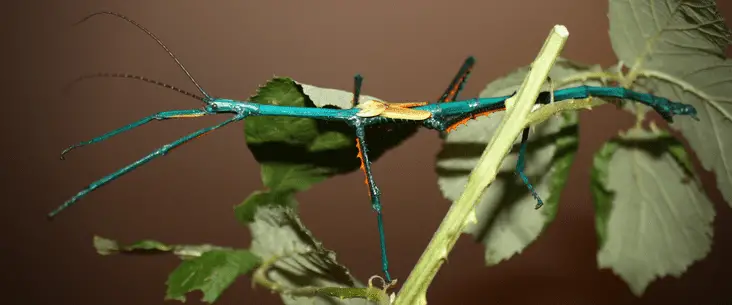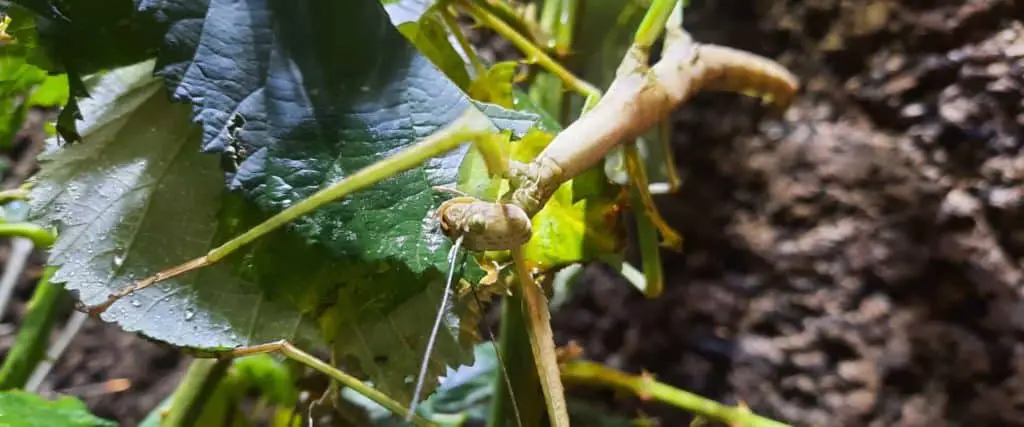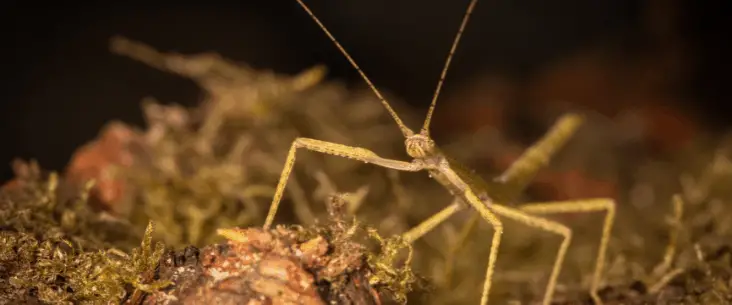Ever wondered where stick insects come from? When you encounter a stick insect in real life, it is probably an adult specimen, or at least nearly reached adulthood. But, what about baby stick insects? How are they born?
The life cycle of stick insects exists of three main life stages: the egg, nymph and adulthood. The eggs are tiny and shaped like seeds, and when they hatch after several weeks to months, tiny stick insects emerge. These small nymphs already look like full stick insects, and slowly they grow to adult size.
Interesting right? There is much to discover about the life cycle of stick and leaf insects. In this article, we will take a close look from egg to adults that eventually lay eggs again. Let’s go!
The life cycle of stick and leaf insects explained
Stick insects go through three different life stages: the egg, nymph, and adulthood. Each life stage has its specifics and wonders. Here we take a close look at every life stage, starting with stick insect eggs.
The egg stage
The first stage starts with a tiny egg ranging from 1.5 cm down to only 2 mm, depending on the size of the species and the egg-laying technique of that species. Amazing that such a relatively large insect comes from such a tiny egg.
The eggs have a hard shell and are oval-shaped. Quite extraordinary is that the eggs look exactly like seeds. Every stick insect has a different seed-shaped egg with specific appendages.
Why are they shaped like seeds? This is part of their camouflage trick box. In some parts of the world, ants see the eggs as real seeds and are taken back to the nest. The capitulum (a fatty, knoblike cap on the egg) contains substances where ants feed on without destroying the embryo. With this strategy, the eggs are protected by the ants from predation. They stay buried underground during winter and hatch when it warms up in the spring.
However, you may wonder why a stick insect that looks so inconspicuous have eggs that look like tasty seeds? In newer research, they hypothesise that the seed-like eggs are eaten by small birds where some survive the digestive tract and are further dispersed this way. Where only a small percentage will survive the bird digestive tract — many species lay a large number of eggs, and with such a good camouflage they are not found by predators.
Some stick insect eggs hatch quite quickly within a few weeks, where others take over several months (some even over a year). Hatching times depends on the species, habitat and weather conditions. Every egg only contains one stick insect nymph, which is folded inside the egg.
Related read: What to do if stick insect nymph is stuck on its egg?
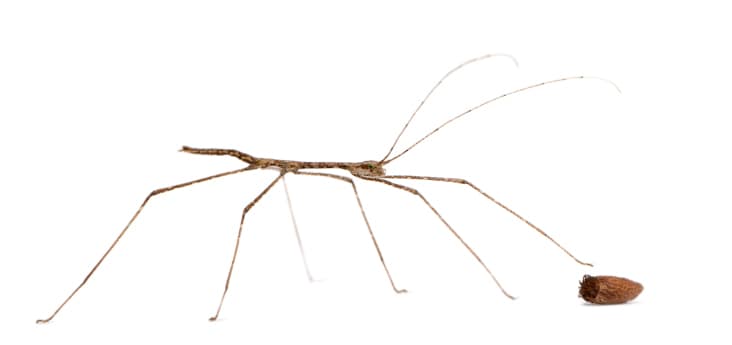
The nymph stage
Nymphs almost look like adult stick insects, only differ in size and often in colour. This is called hemimetabolous, which means that the nymph goes through a series of several nymphal stages. Every stage has a number, where a newly hatched nymph is represented by L1. How many stages a stick insect need to reach adulthood differs from species to species but also between sexes.
When a nymph emerges, it is tiny and fragile. They will eat their cast skin to get the first nutrition and then quickly climb upwards of plants and trees to find safety, feed on the newest leaves and warm up in the sun.
After every moult, the nymph will often eat its old skin to preserve valuable nutrition. Nothing is left to waste. But that is not all. During the many moults, stick insect nymphs are able to grow back lost limbs. As a defence mechanism, they can disconnect the limbs when they are grabbed. However, it makes it more difficult for the animal to move around. Until they reach adulthood, they can regrow the limbs, although it can take multiple moults before it is fully regenerated.
Can you tell the gender of stick insect nymphs? Although stick insects are sexual dimorphs, you can start to see the difference in gender in some species from L3, however, with other species only at one of the latest moults.
It takes between 3 months up to a year — depending on the species — and many moults for a nymph to reach adulthood.
Related read: 12 Reasons Why Stick Insects Make Good Pets
The adult stage
When stick insects reach adulthood, you can quite easily distinguish males from females. Females are generally larger than males, due to their larger abdomen for producing eggs. On the other hand, many male stick insects have fully developed wings that they can use (for one of the reasons) to fly in search of mates — some females have (underdeveloped) wings too.
Adults are masters in camouflage. They mimic twigs and leaves not only by shape and colour but also by behaviour. When startled, they start rocking from left to right like a twig waving in the wind.
Some stick insects have even further developed adaptations to escape from predators. Some stick insects can lay down moveless playing dead for many hours. Many predators only eat live food and avoid dead insects — probably to avoid infection by diseases. Others have spiny appendages and spikes on their legs to harm the attacker. Some even spray an irritating, foul-smelling substance.
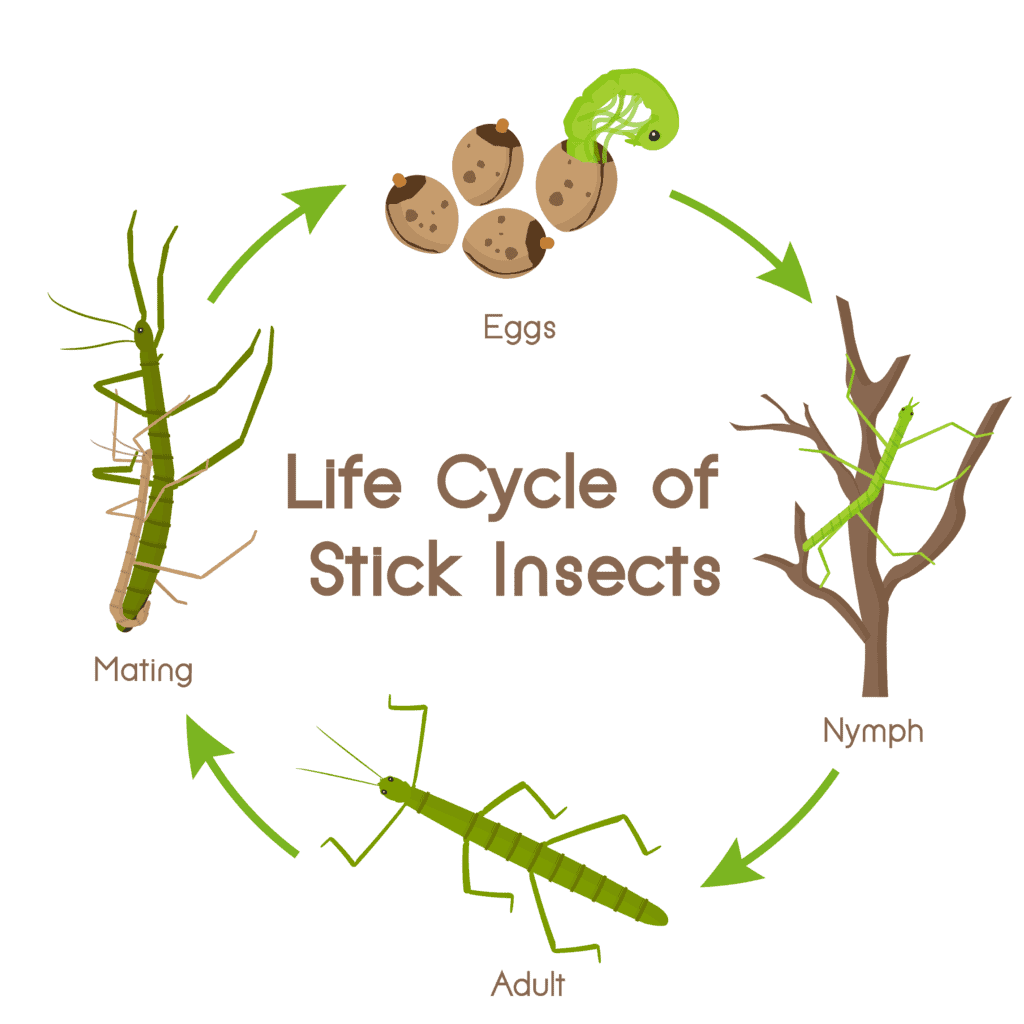
How do stick bugs reproduce? The reproduction process
The life cycle of phasmids ends when the female lay eggs again. Different species have developed different egg-laying methods. Some will flick or drop her eggs onto the ground. Others carefully place eggs inside or glued onto hostplants. Some females will come down to bury the eggs in small pits in a substrate.
A single female can lay around 100 to 1200 eggs after she has mated a single male. However, many females are parthenogenic, meaning that females can lay fertile eggs without the need to mate with a male. Eggs from these females are exact copies of the mother and will all be female. The use of this strategy depends on the presence and abundance of males in the area.
Females don’t have any care for their eggs. They leave them and will go on with their life — which is mainly sitting still or munching on leaves. After the female laid eggs, the life cycle is complete and starts again.
How long do stick insects live?
But what about the lifespan of stick insects and leaf insects? How long do these creatures live?
The lifespan of phasmids highly varies between species. Some only live several months while others can live up to three years. Lifespan in captivity is higher due to good conditions, the abundance of food and lack of predation.
| Stick insect species | Average lifespan |
|---|---|
| Indian stick insect (Carausius morosus) | Up to 1 year |
| Giant prickly stick insect (Extatosoma tiaratum) | 1-1,5 years |
| Jungle Nymph (Heteropteryx dilatata) | Up to 2 years |
| New Guinea spiny stick insect (Eurycantha calcarata) | Up to 2 years |
| Zompro’s stick insect (Parapachymorpha zomproi) | Up to 1 year |
| Velvet black beauty stick insect (Peruphasma schultei) | Up to 1 year |
| Philippine leaf insect (Phyllium phillippinicum) | Up to 1 year |
| Giant leaf insect (Pulchriphyllium giganteum) | 1-1,5 year |
Generally, stick insects kept in contained spaces in your house will reach the age of between 12 to 18 months before they die of old age. Most kept species live for at least 10 months easily. Thereby hatching rate and survival rate are also much higher in captivity.
So although they do not live for a very long time in total, they can reproduce rather quickly and new stick insects will soon crawl around in your enclosure. For example, with Indian stick insects (Carausius morosus) you soon have already too many eggs or nymphs in your enclosure, because almost all stick insects reach the reproductive age.
There are many dangers for wild stick insects but mostly their lifespan is shortened because of predation. Even with such good camouflage and mimicry strategies, many stick insects won’t survive before they are able to reproduce.
Stick insects and leaf insects make interesting pets. With approximately 3000 different species in the world — and still new species being discovered regularly — there are many that are kept as pets and one is even more amazing than the other. Is it not the size, then it is in colour or shape.
Bugs you can keep as a pet
There are many bugs that make great pets. Check out the bugs below, maybe you find them interesting to keep as pets.
– Phasmids (stick insects & leaf insects)
– Praying mantises
– Millipedes
– Beetles
– Ant colony
– Tarantulas
– Giant snails
Share this page!

